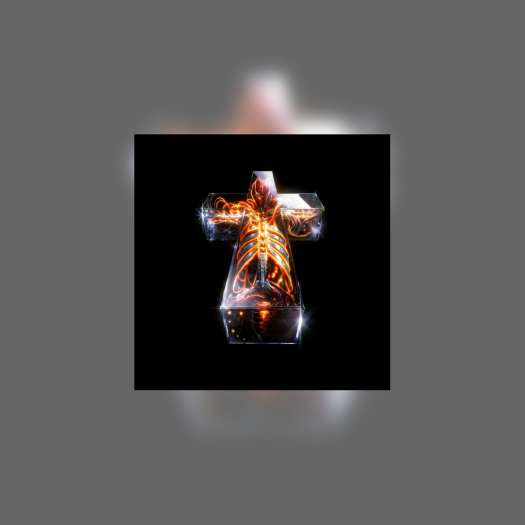Metal is a genre of music that is often stereotyped, dismissed and condemned but it's also misunderstood by many, even those who consider themselves experts, fans or even "metal" musicians. Metal-head lifer Sam Dunn's documentary is an anthropological study of the music and its characteristics that could have easily gone wrong. But thanks to his proficiency and understanding, he's compiled a solid who's who in metal and asked the right questions.
At first, though, Dunn comes across like an undesirable host, giving an account of his roots in the music and why he loves it so much. It takes some time to warm up to his unbridled enthusiasm, but once you do he feels like a friend you worked hard to make. Throughout his journey, Dunn divides metal's make up into a number of different categories, such as origin, roots, fans, culture, gender and sexuality, media, religion and Satanism, and death and violence. With some nifty charts, he also links all of the different sub-genres involved that help make metal such a diverse and rich music.
However, as many may guess much of the film's appeal lies in its interviews and Dunn chose his subjects wisely in helping him find answers to his many questions. Artists interviewed include Tony Iommi, Bruce Dickinson, Slayer, Ronnie James Dio, Lamb of God, Cannibal Corpse and Voivod, while experts featured include journalists Chuck Klosterman and Malcolm Dome, Satanist Gavin Baddeley, Metal Blade's Brian Slagel, Century Media's Robert Kampf and producer Bob Ezrin.
It's the interviews gone horribly wrong though that make for the film's most intriguing moments. Mayhem's drunken animosity nearly results in violence, while Dunn's visit to Norway uncovers some serious intellectual deficiencies in the church burning promoters.
In the end, Dunn digs up some answers as to why such a beloved musical genre is so misconstrued, just like he set out to do. But for even the casual viewer he does much more than that he spreads and conveys an appreciation for a genre its fans are unbelievably passionate about, leaving even the biggest metal hater a little curious as to what they're missing out on. (Seville)
By trade, you're an anthropologist. What inspired you to make a film instead of writing a book on metal?
Dunn: I did initially want to write a history book because five years ago it had never been done. I shared the idea with Scot, who was working on the soundtrack to Ginger Snaps and listening to a lot of heavy metal. He mentioned, "Well, what about a documentary? Has one ever been made about heavy metal?" So we looked into it and the answer was no.
What were your hopes/expectations like in making a doc on something as misunderstood as heavy metal?
Dunn: We both hoped that we could make a movie that could appeal to both metal fans and non-metal fans alike, that was important. We didn't want to just make a film that would be a pat on the back about heavy metal; we wanted something more that would bring people into this world. The nature of this music is that it polarises people they either love it or hate it.
McFayden: The most diverse audience I'd ever seen was at a screening in Prince George. At the end, this guy stood up, and he was almost 90, and he said, "You know, I knew nothing about this music before, but I'm gonna go out and buy a Slayer album." The film totally opened him up to this world.
Dunn: I had goose bumps when he was saying it. That represented exactly what we wanted to do with the film. A parallel story is with a metal fan at the Atlantic Film Festival in Halifax; a guy got up impulsively at the end and said, "Thanks man, for finally making a movie that didn't make us look like idiots!"
At first, though, Dunn comes across like an undesirable host, giving an account of his roots in the music and why he loves it so much. It takes some time to warm up to his unbridled enthusiasm, but once you do he feels like a friend you worked hard to make. Throughout his journey, Dunn divides metal's make up into a number of different categories, such as origin, roots, fans, culture, gender and sexuality, media, religion and Satanism, and death and violence. With some nifty charts, he also links all of the different sub-genres involved that help make metal such a diverse and rich music.
However, as many may guess much of the film's appeal lies in its interviews and Dunn chose his subjects wisely in helping him find answers to his many questions. Artists interviewed include Tony Iommi, Bruce Dickinson, Slayer, Ronnie James Dio, Lamb of God, Cannibal Corpse and Voivod, while experts featured include journalists Chuck Klosterman and Malcolm Dome, Satanist Gavin Baddeley, Metal Blade's Brian Slagel, Century Media's Robert Kampf and producer Bob Ezrin.
It's the interviews gone horribly wrong though that make for the film's most intriguing moments. Mayhem's drunken animosity nearly results in violence, while Dunn's visit to Norway uncovers some serious intellectual deficiencies in the church burning promoters.
In the end, Dunn digs up some answers as to why such a beloved musical genre is so misconstrued, just like he set out to do. But for even the casual viewer he does much more than that he spreads and conveys an appreciation for a genre its fans are unbelievably passionate about, leaving even the biggest metal hater a little curious as to what they're missing out on. (Seville)
By trade, you're an anthropologist. What inspired you to make a film instead of writing a book on metal?
Dunn: I did initially want to write a history book because five years ago it had never been done. I shared the idea with Scot, who was working on the soundtrack to Ginger Snaps and listening to a lot of heavy metal. He mentioned, "Well, what about a documentary? Has one ever been made about heavy metal?" So we looked into it and the answer was no.
What were your hopes/expectations like in making a doc on something as misunderstood as heavy metal?
Dunn: We both hoped that we could make a movie that could appeal to both metal fans and non-metal fans alike, that was important. We didn't want to just make a film that would be a pat on the back about heavy metal; we wanted something more that would bring people into this world. The nature of this music is that it polarises people they either love it or hate it.
McFayden: The most diverse audience I'd ever seen was at a screening in Prince George. At the end, this guy stood up, and he was almost 90, and he said, "You know, I knew nothing about this music before, but I'm gonna go out and buy a Slayer album." The film totally opened him up to this world.
Dunn: I had goose bumps when he was saying it. That represented exactly what we wanted to do with the film. A parallel story is with a metal fan at the Atlantic Film Festival in Halifax; a guy got up impulsively at the end and said, "Thanks man, for finally making a movie that didn't make us look like idiots!"




